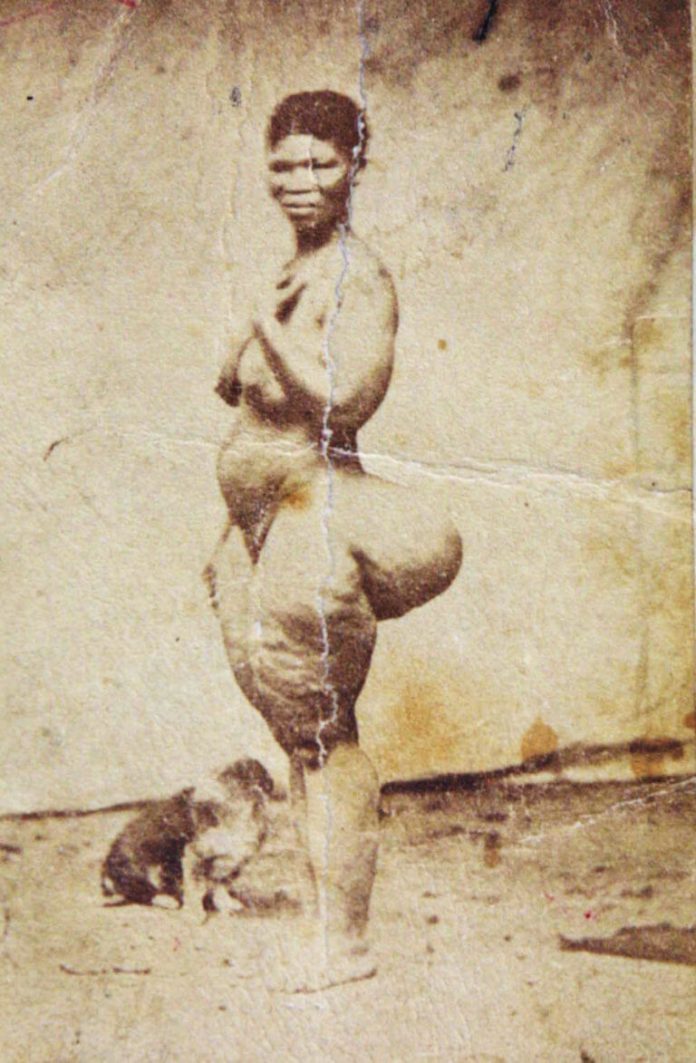She was a Khosa woman, born in South Africa in late 1789, to be precise, Gamtoos Valley – currently, the Eastern Cape province of South Africa.
Saartjie was a member of a tribe called Khoikhoi, a group of indigenous people who lived in the same region of Gamtoos.
When she grew up into a young lady, Baartman was taken from her home by William Dunlop, a British doctor, working on a ship.
Having had the encounter, Saartjie was promised and assured of a job as a servant if she agrees to be sent to Cape Town.
However, instead of being employed as a servant, Saartjie was forced to change her name to Sarah, and to work as a sideshow attraction in England under the name ‘Hottentot Venus‘.
The young woman’s large buttocks and elongated labia were considered unusual and exotic, so she was put on display in London and in Paris as well, where both citizens and tourists paid money to watch her.
Saartjie was taught how to perform various tricks, such as dancing and singing for the sole entertainment of those watching.
Despite all the fame and exposure Saartjie got, she was ill-treated to the core and was not paid for any of her performances.
In 1815, Saartjie, also known as ‘Hottentot Venus’ died of syphilis, because she was constantly assaulted through the multiple sexual escapades her captors submitted her to.
According to research, Saartjie Baartman often fell sick, but was denied quality health care because a lot of people paid to gawk at her, almost everyday.
Her remains were dissected and put on display in the Paris museum.
In 2002, the South African government campaigned for the return of Baartman’s dissected remains to South Africa — which was a success!
Fortunately, she was laid to rest within the same year of the campaign.
This article seeks to remind the general public of the exploitation and mistreatment of coloured people from time immemorial.











